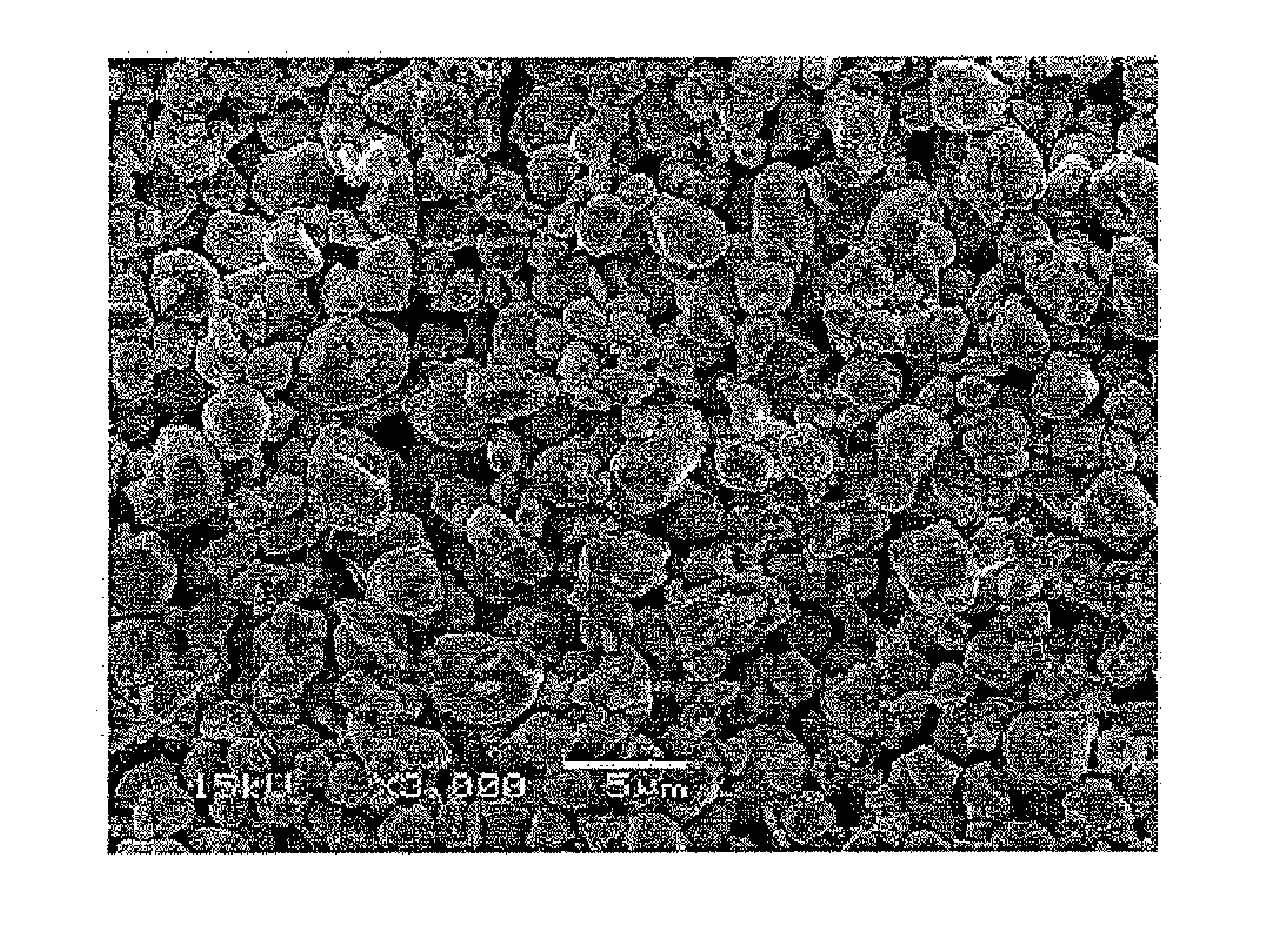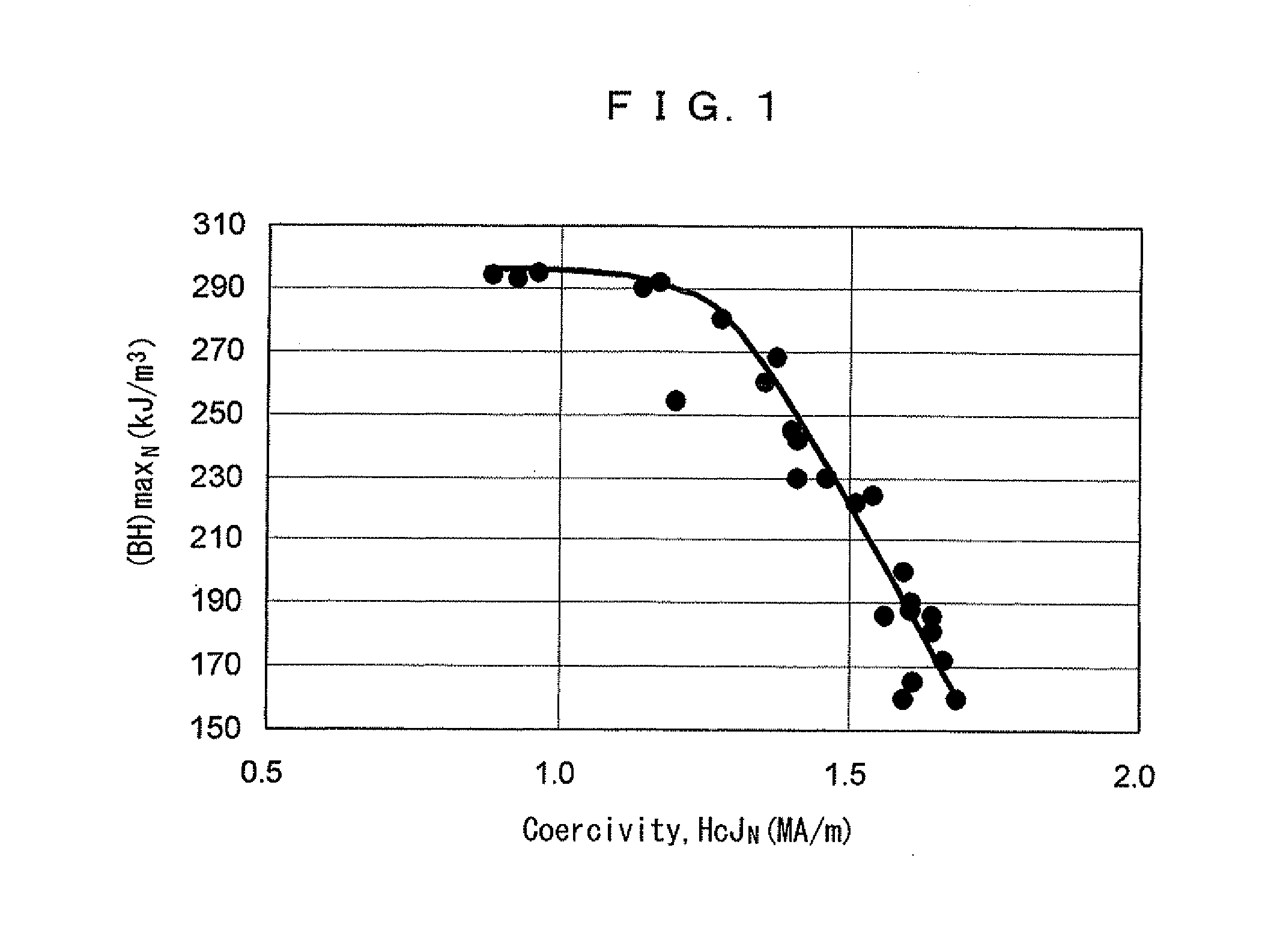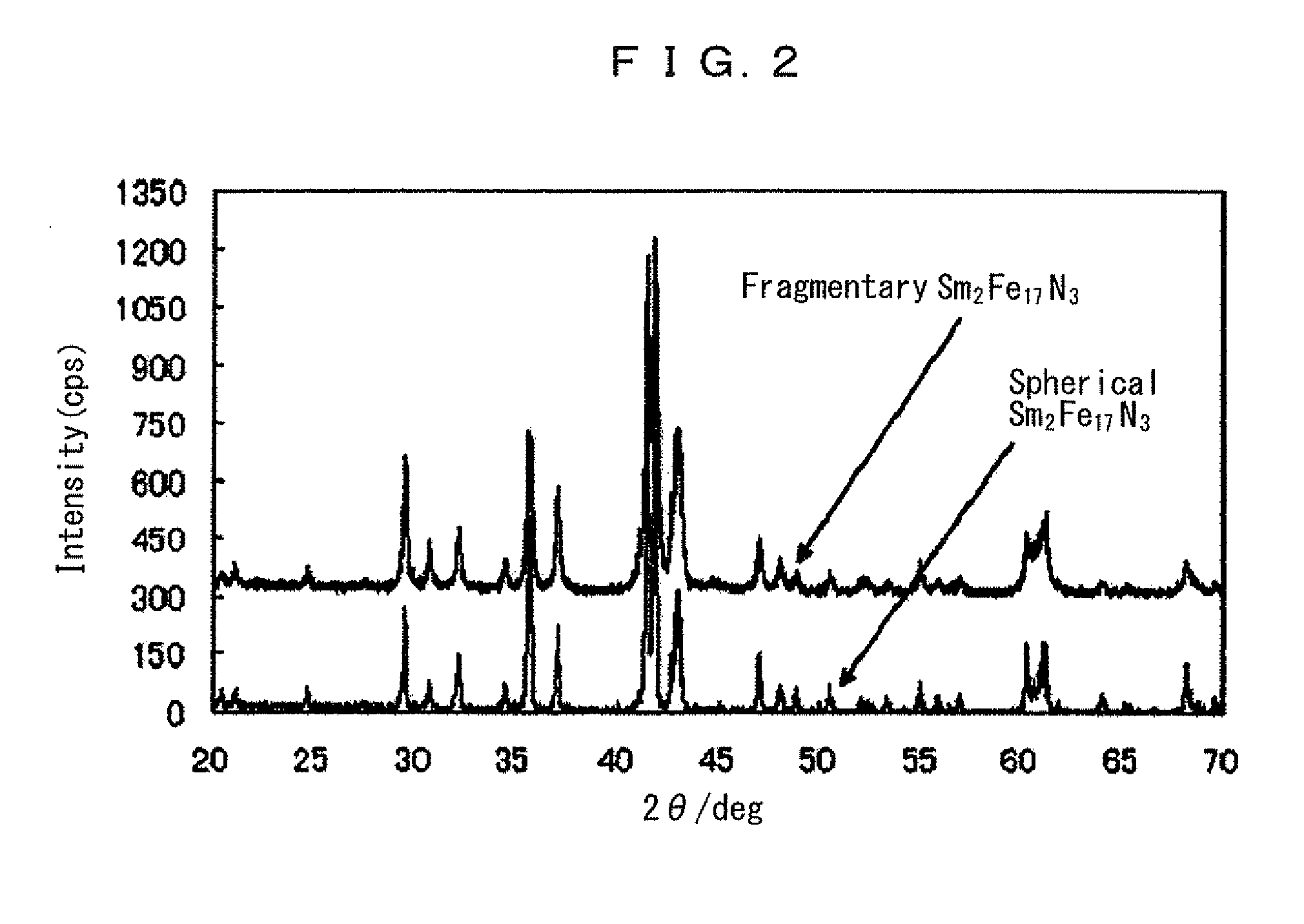Anisotropic rare earth-iron based resin bonded magnet
a rare earthiron and resin bonding technology, applied in the field of rare earthiron based resin bonding magnets, can solve the problems of insufficient pressureless sintering of magnetically isotropic strips, insufficient co supply stability, and inability to catch up with the enhancing performance of electric and electronic equipment, so as to achieve effective secure magnetic stability, the effect of squareness of demagnetization curve and not deterioration
- Summary
- Abstract
- Description
- Claims
- Application Information
AI Technical Summary
Benefits of technology
Problems solved by technology
Method used
Image
Examples
embodiments
[0098]Hereinafter, the present invention will be explained in further details based on embodiments. The present invention is not however limited to the embodiments.
[0099]FIG. 2 is a chart indicating X-ray diffraction patterns of Sm2Fe17N3 based magnetic materials produced without conducting mechanical milling following nitriding of an Sm—Fe alloy, and a fragmentary Sm2Fe17N3 based magnetic material that has been milled through a jet mill following nitriding. As shown, there is no difference in both crystal structures based on a Sm2Fe17N3 intermetallic compound.
[0100]FIGS. 3A and 3B are SEM (Scanning Electron Microscope) photos indicating two kinds of magnetic materials. Considering the fragmentary Sm2Fe17N3 based magnetic materials as shown in FIG. 3B, it is possible to observe the aggregation of micronized powder formed by milling, the micronized powder having a particle size of less than 1 μm (exclusive). On the other hand, as shown in FIG. 3A, the Sm2Fe17N3 based magnetic materia...
PUM
| Property | Measurement | Unit |
|---|---|---|
| Temperature | aaaaa | aaaaa |
| Length | aaaaa | aaaaa |
| Length | aaaaa | aaaaa |
Abstract
Description
Claims
Application Information
 Login to View More
Login to View More - R&D
- Intellectual Property
- Life Sciences
- Materials
- Tech Scout
- Unparalleled Data Quality
- Higher Quality Content
- 60% Fewer Hallucinations
Browse by: Latest US Patents, China's latest patents, Technical Efficacy Thesaurus, Application Domain, Technology Topic, Popular Technical Reports.
© 2025 PatSnap. All rights reserved.Legal|Privacy policy|Modern Slavery Act Transparency Statement|Sitemap|About US| Contact US: help@patsnap.com



